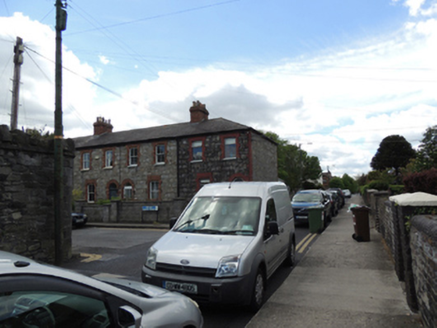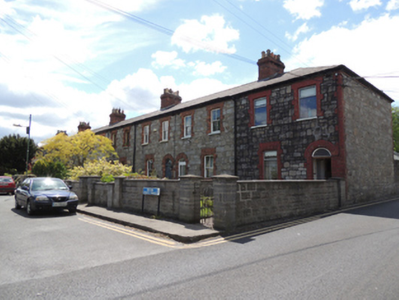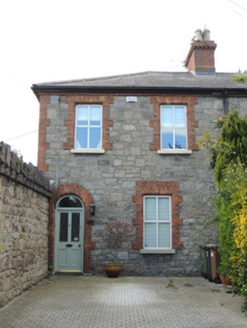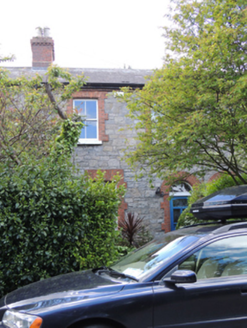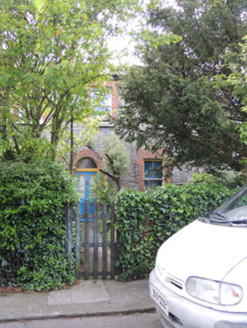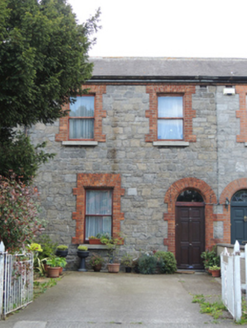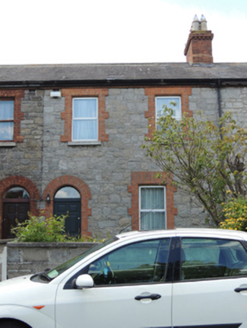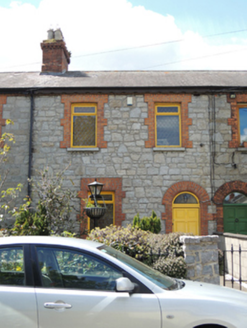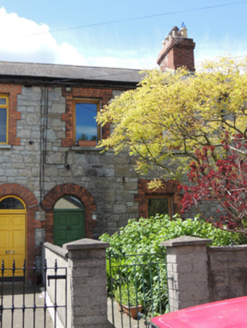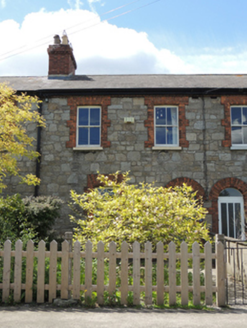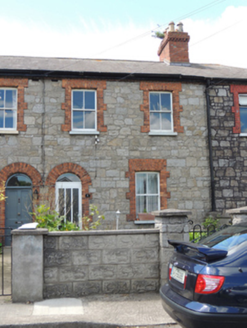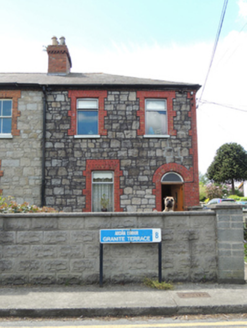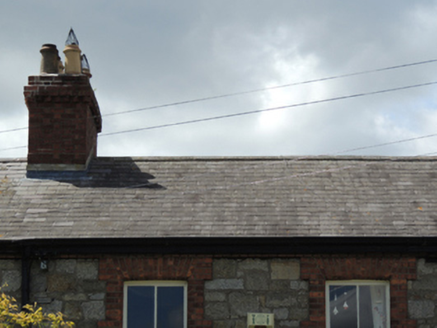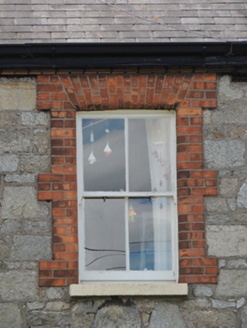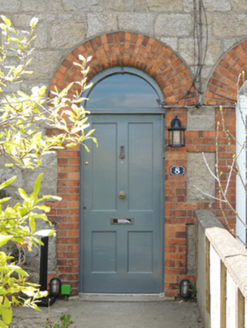Survey Data
Reg No
50080445
Original Use
Worker's house
In Use As
House
Date
1860 - 1880
Coordinates
311718, 233446
Date Recorded
24/05/2013
Date Updated
--/--/--
Description
Terrace of ten two-bay two-storey former railway worker’s houses, built c.1870, with single-storey returns to rear (west) elevation. Hipped slate and artificial slate roofs with red brick chimneystacks, clay chimney pots, some cast-iron rainwater goods and red brick eaves course. Dressed granite walls having red brick quoins to end houses. Square-headed window openings with red brick bull-nosed block-and-start surrounds, cut granite sills, two-over-two pane timber sash windows and replacement uPVC windows. Paired round-arched door openings having bull-nosed red brick block-and-start surrounds, timber panelled doors, plain overlights and some replacement uPVC doors. Gardens to front, enclosed by recent walls or fences. Laneway to immediate rear of houses, and detached gardens to west of laneway. Estate boundary wall adjoining no.1 to south.
Appraisal
The Great Southern & Western Railway was established in 1844, and the GS&WR engineering works was constructed on a 73 acre site at Inchicore from 1846. The Works Estate was constructed to the east of the GS&WR Works to accommodate workers and their families, as the then rural area had insufficient housing for the new population. Granite Terrace was one of the later terraces to be built, as were Saint George’s Villas, Abercorn Terrace and Saint Patrick’s Terrace. Though few residents are now employed in the nearby railway works, the estate is a notably example of a nineteenth-century industrial village, coherently planned with recreational, educational, and employment facilities alongside housing. These terraced houses are characterised by their paired door openings, and nos.2, 3, 8 and 9 retain early timber sash windows. The use of granite in all elevations sets these houses apart from all other houses in the Works Estate, which are lined-and-ruled rendered or red brick. The long gardens to the west provided the railway workers and their families with land for vegetables and some animals, and a green to the east still provides a communal recreational space for residents.
